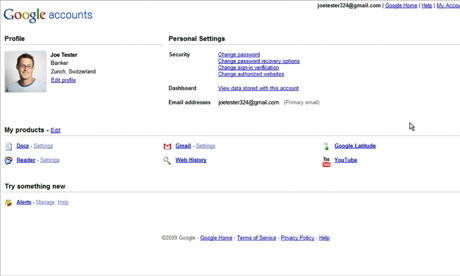Unless you live in a cave, don't care at all about technology or have been distracted by Sarah Palin's publicity tour, you've probably heard that Google showed its Linux-based Chrome operating system to the world yesterday.
Google, a company born and bred on the Web, has a mighty challenge ahead of it getting into the PC business. Aware of this, Google does not have grand ambitions to take over PCs with Chrome. It's a browser and cloud-based OS for netbooks designed to be fast, simple and secure. Chrome will not support hard drives, only solid-state storage, and it will only run Web-based applications. There will be no desktop-type software programs allowed.
As for security, if any application is in danger of being corrupted by malware, Chrome has been designed to reboot itself, after which a clean version of the OS is downloaded. Nearly all user data will be stored in the Google's cloud computing service and will be encrypted and sychronized constantly between the netbook and the cloud.
Creating a cloud OS for netbooks that will run only Web apps through a speedy Google browser makes sense for a company that has been at the forefront of Web-based computing since its inception.
But with Chrome OS's availability pushed until the end of 2010 and Google conceding that Chrome OS netbooks are secondary devices to conventional PCs, is Google's focus too narrow and its development too slow?
CIO.com and its sister publications covered the Chrome OS unveiling from every angle, with some news analysis and opinion articles calling Chrome revolutionary and others declaring it a disaster, and everything in between.
Here's a round up of this week's Chrome OS stories.
Google released its Chrome operating system to the open-source community on Thursday and said it has designed the netbook OS to be faster, simpler and more secure than existing ones.
Google's Chrome OS doesn't signal the apocalypse for Apple and Microsoft, but that doesn't mean the operating system won't succeed. Just like the Chrome Web browser, Google's carving out a small slice of the market for people who want the company's buzzwords of speed, security and simplicity.
The excitement around the Chrome operating system has led to rampant rumors and speculation, but PCWorld's Tony Bradley questions whether the Chrome OS is really worth any of this hype.
With Google working on its upcoming browser-based Chrome operating system, the company is intensifying its grudge match with rival Microsoft.
Microsoft was, predictably, not all that impressed by Google's demonstration of its upcoming Chrome OS today, while other potential rivals were split.
Chrome OS is lauded by Google as a completely new method of personal computing and it does have a number of features that are intriguing. On the other hand, a Chrome OS device is really another incarnation of a thin client mobile Internet device.
Watching Google's Chrome OS event made PCWorld's David Coursey realize that there is a lot in Google's OS that can benefit Microsoft — like giving it a completely new platform and one it needs. If Google is really true to its open source promises, Microsoft should join the fun.
Google has unveiled Chrome OS, an exciting new platform for Web computing that is aimed squarely at consumer netbooks, and has little relevance to businesses today other than as a companion PC.
 According to Marissa Mayer, Google’s vice president of search product and user experience, Google is looking to streamline its search experience. Using a jazz metaphor, Mayer explains that customers aren’t happy with the fact that Google’s search interface is too unpredictable (much like jazz, especially if you aren’t into it) at times.
According to Marissa Mayer, Google’s vice president of search product and user experience, Google is looking to streamline its search experience. Using a jazz metaphor, Mayer explains that customers aren’t happy with the fact that Google’s search interface is too unpredictable (much like jazz, especially if you aren’t into it) at times. is testing an overhauled interface for its main product, Google Search. The new interface, that’ll soon become available to a small portion of users, will contain a sidebar on the left side, somewhat similar to the one you get when you clicked on “Show options” after conducting a search, but far more polished.
is testing an overhauled interface for its main product, Google Search. The new interface, that’ll soon become available to a small portion of users, will contain a sidebar on the left side, somewhat similar to the one you get when you clicked on “Show options” after conducting a search, but far more polished.

 Google is providing the web development community with an intriguing glimpse under the hood at some of the fundamental building blocks of the company's most popular web applications. The search giant has opened the source code of its comprehensive JavaScript library collection and is making it available to third-party developers for widespread adoption. Google also opened the source code of its own JavaScript compression tools.
Google is providing the web development community with an intriguing glimpse under the hood at some of the fundamental building blocks of the company's most popular web applications. The search giant has opened the source code of its comprehensive JavaScript library collection and is making it available to third-party developers for widespread adoption. Google also opened the source code of its own JavaScript compression tools. 